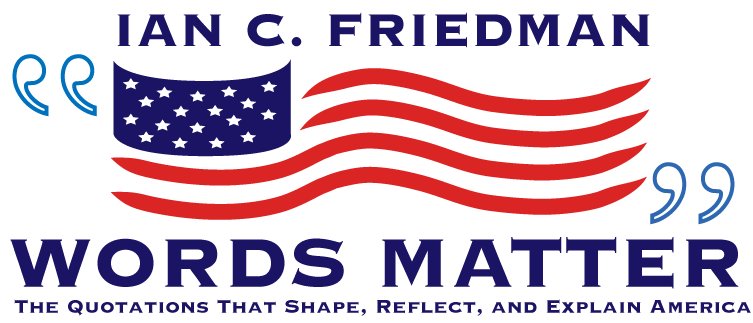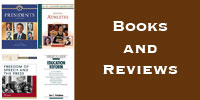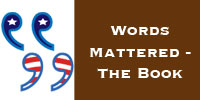“It became necessary to destroy the town in order to save it.” – U.S. Army Major, 1968
Today is the 43rd anniversary of the beginning of the Tet Offensive. To commemorate it, I am posting this excerpt from my book proposal, Words Mattered: The 200 Quotations That Created, Shaped, and Explain American History.
Compounding the exasperation of the U.S. military in Vietnam and American citizens at home was confusion and horror regarding the battles of this war. The North Vietnamese Army and Vietcong effectively frustrated and overcame the technically superior U.S. forces through the highly organized use of such tactics as ambushes, night attacks, and booby traps.
Robert McNamara’s successor as Secretary of Defense, Clark Clifford, later recalled the words of a U.S. general unaccustomed to fighting in treacherous jungle terrain, who reflected the anger of many in the U.S. military by shouting: “Damn them, they wouldn’t come out and fight!” The United States applied napalm to defoliate whole regions to allow greater ease in rooting out the hidden enemy, and although this strategy often achieved its basic aim, it also led to the flight of masses of refugees and to increased Vietnamese ill-will toward Americans. It also caused Americans to question their own country’s purposes and tactics.
A demoralizing sense of paranoia began to set in among many U.S. troops who were traumatized not only by confrontations with the known enemy but also by attacks by South Vietnamese peasants who were usually perceived as friendly: smiling old ladies carrying bombs and children offering refreshments filled with undetectable shards of glass. The Communists knew where the Americans were but remained hidden themselves. They sustained massive losses but were constantly recruiting people and replenishing supplies, which were transported down the series of paths from the north known as the Ho Chi Minh Trail. Their endurance, honed over centuries of armed struggle with China, Japan, and France, allowed them to wait while patience in the United States diminished.
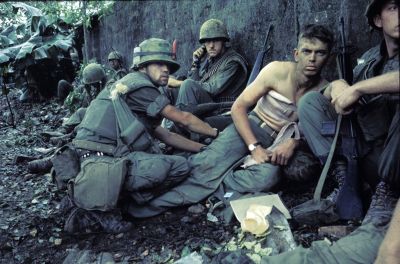 Americans’ growing sense of futility was reflected in reactions to the January 1968 Tet Offensive. This Communist surprise attack, launched on the Vietnamese lunar new year holiday of Tet, brought vicious fighting into many of the largest cities in the south. The Communists briefly captured part of the U.S. embassy in Saigon, South Vietnam’s capital, and they also temporarily held Hue, the last seat of a unified Vietnam. However, their military losses were staggering. At Khe Sanh alone 10,000 North Vietnamese and Vietcong fighters died, compared to only five hundred Americans. Within a few months, the Communists had lost the cities they had controlled in the wake of the attack
Americans’ growing sense of futility was reflected in reactions to the January 1968 Tet Offensive. This Communist surprise attack, launched on the Vietnamese lunar new year holiday of Tet, brought vicious fighting into many of the largest cities in the south. The Communists briefly captured part of the U.S. embassy in Saigon, South Vietnam’s capital, and they also temporarily held Hue, the last seat of a unified Vietnam. However, their military losses were staggering. At Khe Sanh alone 10,000 North Vietnamese and Vietcong fighters died, compared to only five hundred Americans. Within a few months, the Communists had lost the cities they had controlled in the wake of the attack
Yet these military losses were offset by giant propaganda and political gains for the Communists. The Tet Offensive damaged U.S. pacification efforts in South Vietnam and severely punctured popular support for the war in the United States. This was the first televised war and coverage of Tet on the nightly news included images and sounds that deeply disturbed American sensibilities of mission. During the height of the Tet Offensive, a U.S. Army major captured the lamentable logic of this complex war when he explained to a CBS television reporter that to counteract Communist infiltration in a town, “It became necessary to destroy the town in order to save it.”
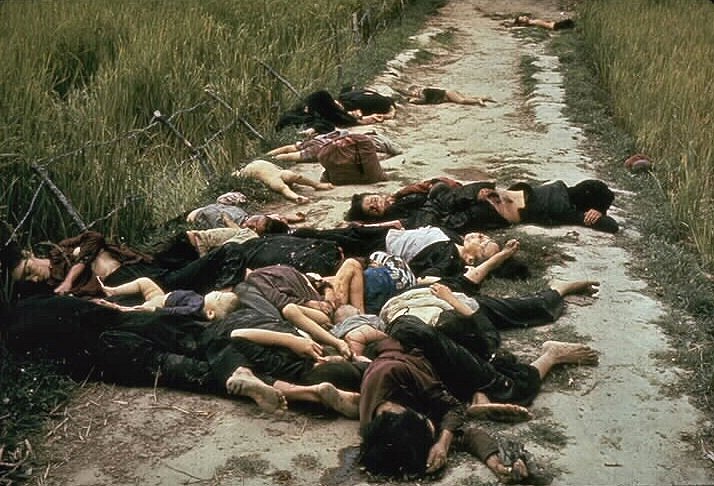 In 1969 details emerged about a U.S. military massacre a year earlier of between three hundred fifty and five hundred Vietnamese civilians–mostly women, children, and the elderly–in the South Vietnamese village of My Lai (the young men of the village were likely active Viet Cong.) What became known as the My Lai Massacre led to criticism of the reliance on body counts to measure American success, the absence of top young potential leaders, many of whom avoided service by attending college or through personal connections, and the perceived cover-up culture of the military establishment that portrayed the incident at My Lai as a well-executed operation until soldiers and eventually journalists began explaining what really happened there.
In 1969 details emerged about a U.S. military massacre a year earlier of between three hundred fifty and five hundred Vietnamese civilians–mostly women, children, and the elderly–in the South Vietnamese village of My Lai (the young men of the village were likely active Viet Cong.) What became known as the My Lai Massacre led to criticism of the reliance on body counts to measure American success, the absence of top young potential leaders, many of whom avoided service by attending college or through personal connections, and the perceived cover-up culture of the military establishment that portrayed the incident at My Lai as a well-executed operation until soldiers and eventually journalists began explaining what really happened there.
My Lai exacerbated the widening division among Americans regarding the Vietnam War. Some, such as California governor Ronald Reagan and former Alabama governor and 1968 presidential contender George Wallace suggested that publication of the My Lai story in newspapers and magazines was done simply for profit and that the horribly graphic photos that accompanied such accounts had not been verified. Others believed, or wished to believe, that the story of U.S. soldiers massacring innocents was something only the enemy did and therefore must be false.
However, soon it was clear and conceded that this atrocity had occurred. For Americans, this nightmare of exasperation made clear the destruction of the Vietnam War; it also provided an even blurrier view of what the United States was trying to save.
